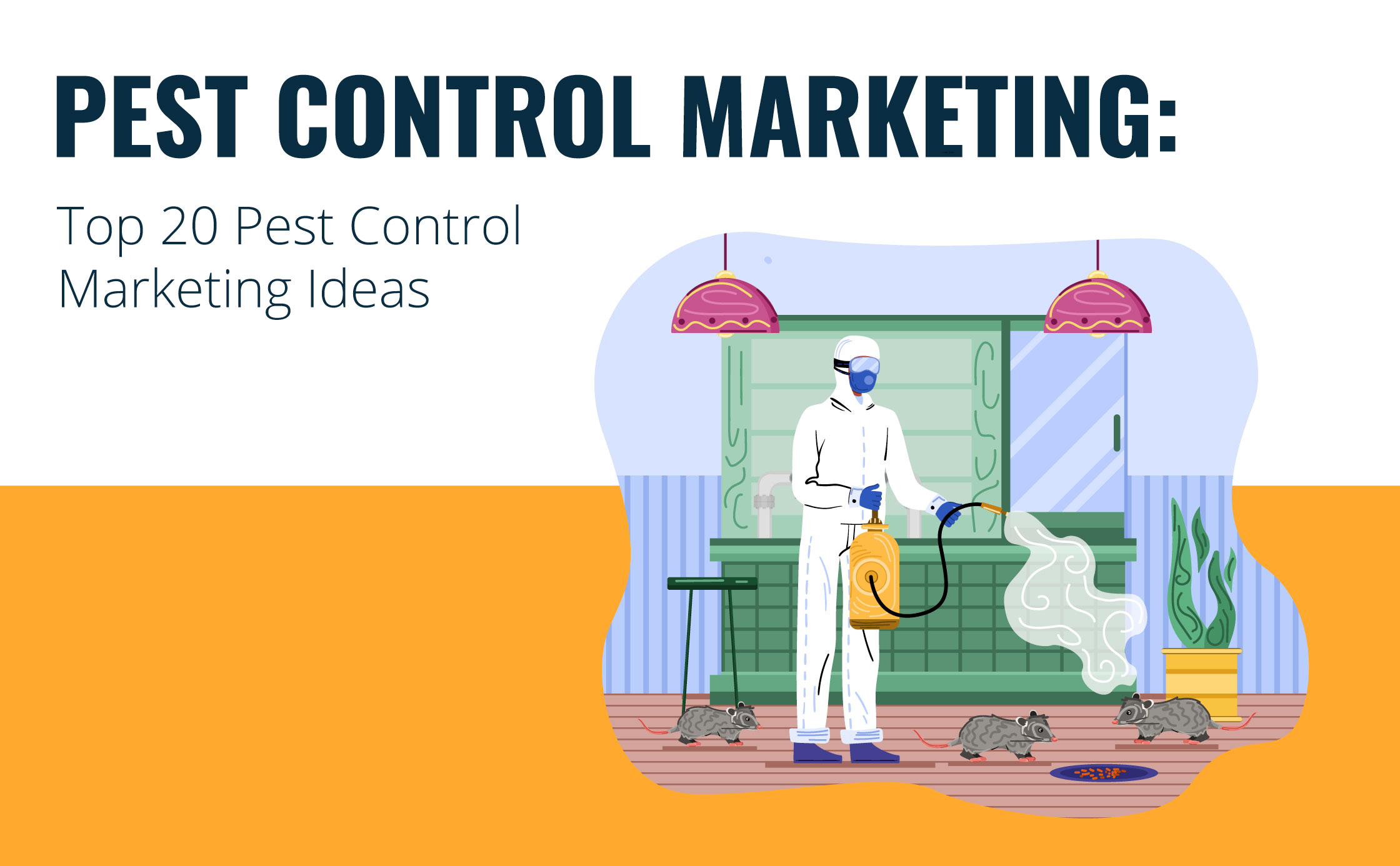MARKETING
Don’t Bug Out About Marketing: A Guide to Pest Control Digital Domination

In the world of pest control, success hinges on one crucial factor: keeping unwanted guests out of your customers’ homes and businesses. But how do you, the protector against creepy crawlies and furry fiends, ensure a steady stream of clients who need your expertise? The answer lies in the digital realm –– a landscape teeming with potential customers and endless marketing possibilities.
This guide equips you with the knowledge and strategies to craft a winning pest control digital marketing campaign. We’ll delve into the buzzing world of online advertising, explore social media strategies to make cockroaches cower, and show you how to build a website that exterminates the competition.
Understanding Your Target Audience: Not All Bugs Are Created Equal
Before unleashing your digital arsenal, take a moment to understand your ideal customer. Are you targeting homeowners plagued by ants, or restaurants battling persistent rodents? Different pests require different solutions, and your marketing message should reflect that.
- Homeowners: Focus on the emotional impact of pests. Highlight the peace of mind that comes with a pest-free home, emphasizing the safety of children and pets.
- Businesses: Target the financial implications. Showcase the potential damage pests can cause to property and reputation.
Crafting Compelling Content: From Creepy Crawlies to Clicks
Content is king (or queen, depending on your perspective). High-quality, informative content positions you as a trusted authority in the pest control domain. Below are content creation ideas to get you started:
- Blog: Share informative articles about common pests in your area, prevention tips, and the benefits of professional pest control.
- Videos: Create engaging explainer videos on pest identification, DIY prevention methods, and behind-the-scenes glimpses of your service.
- Infographics: Present complex information on pest life cycles or the dangers of specific pests in an easily digestible format.
Website: Your Digital Fortress Against Pest Problems
Your website is the very heart and backbone of your online presence. Make it a user-friendly haven for potential customers seeking pest solutions.
- Clear Value Proposition: In a concise and captivating way, explain what sets your company apart. Do you offer eco-friendly solutions? 24/7 emergency services? Highlight these unique selling points.
- Service Pages: Dedicate individual pages to each pest you tackle, detailing the specific treatment methods employed.
- Testimonials and Reviews: Make sure to maximize positive feedback from satisfied customers. This social proof builds credibility and thus, encourages potential clients to choose you.
- Lead Generation Forms: Make it easy for visitors to connect with you. Include forms for requesting quotes, scheduling appointments, or signing up for your newsletter.
Optimizing for Search Engines: Let the Bugs Find You
Search engine optimization (SEO) ensures your website appears at the top of search results when people type in pest control-related queries.
- Keyword Research: Identify relevant keywords that potential customers might use to search for pest control services.
- Content Integration: Incorporate these keywords naturally throughout your website content, including blog posts, page titles, and meta descriptions.
- Local SEO: Optimize your website for local searches by claiming your Google My Business listing and including your city and service area in your website copy.
Social Media: Where Engagement Breeds Business
Social media platforms are buzzing with potential customers.
- Choose the Right Platforms: Focus on platforms where your target audience resides. For B2C services, Facebook and Instagram might be ideal. For B2B services, consider LinkedIn.
- Post Engaging Content: Share a mix of informative content (pest identification tips), educational videos (DIY prevention methods), and behind-the-scenes glimpses of your team in action.
- Run Contests and Giveaways: Offer free consultations or discounted services to generate excitement and engagement.
- Respond to Comments and Messages: Maintain an active presence by promptly responding to queries and concerns expressed by potential customers.
Paid Advertising: A Targeted Approach
Paid advertising platforms like Google Ads and social media advertising allow you to target specific demographics and locations with laser precision.
- Campaign Goals: Determine your desired outcome. Do you seek brand awareness, website traffic, or appointment bookings?
- Targeting: Refine your audience by demographics, location, interests, and online behavior.
- Eye-Catching Ads: Create compelling visuals and persuasive ad copy that grabs attention and entices users to click.
Email Marketing: Cultivating Lasting Relationships
Email marketing allows you to nurture leads and stay connected with existing customers. Here’s how to build a robust email list and craft campaigns that resonate:
- Offer Valuable Incentives: Like free downloadable guides on DIY pest prevention for common household pests, or early-bird discounts on seasonal pest control services.
- Website Opt-in Forms: Strategically place signup forms on your website, offering valuable content like ebooks or checklists in exchange for email addresses.
- Lead Magnets: Create downloadable resources like “The Ultimate Guide to Identifying Household Pests” or “5 DIY Tips to Keep Mosquitoes at Bay.”
Measuring Success: Tracking What Works
Digital marketing thrives on data. Implement tracking tools to analyze your campaigns’ effectiveness. Key metrics to monitor:
- Website Traffic: Track how many people visit your website after clicking on your emails, social media posts, or ads.
- Lead Generation: Monitor how many potential customers submit contact forms or request quotes through your website.
- Engagement: See how many people open your emails, click on links within them, or like and share your social media posts.
- Conversion Rate: Track how the voisitors convert into paying customers.
By analyzing these metrics, you can refine your campaigns and optimize your digital marketing strategy for maximum impact.
Conclusion: From Bugged to Booked
By implementing these pest control advertising strategies, you can transform your digital presence from a lonely corner of the internet into a thriving hub for pest control solutions. Remember, consistency is key. Regularly publish informative content, engage on social media, and nurture your email list. With dedication and a strategic approach, you’ll attract a steady stream of customers, leaving them with peace of mind and a pest-free haven. The digital world is your battleground, and with the right weapons (the right marketing tactics!), you’ll conquer the competition.
Stay ahead of the curve with the freshest news updates by exploring TodayFirstMagazine!







